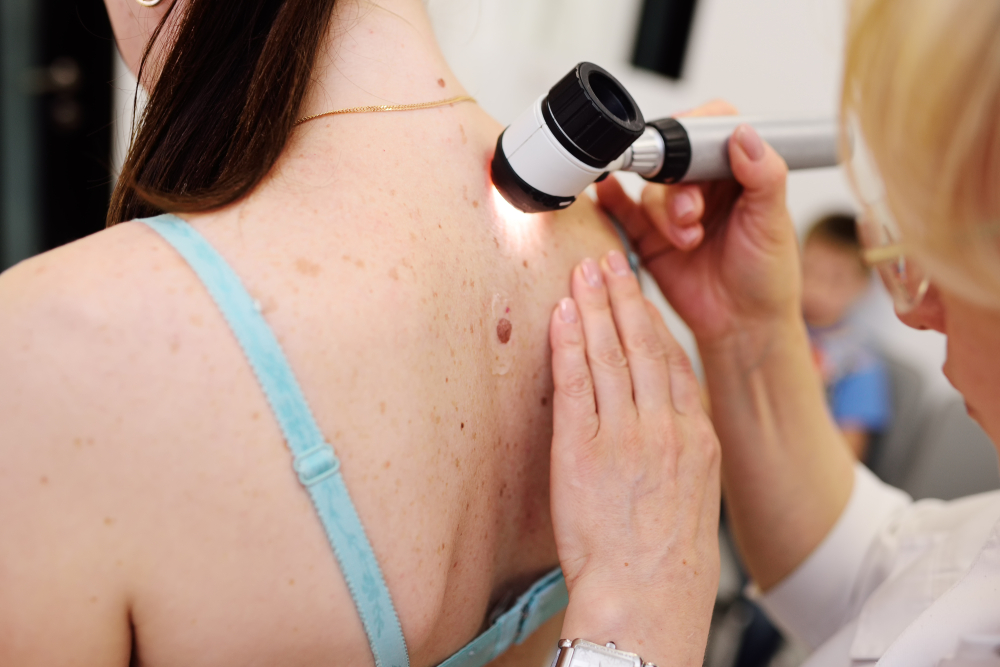Cutaneous Melanoma and Visual Inspection
Posted on 23rd December 2021 by Tessa Li Chyin Lim

In this blog post, I will provide my own summary of a 2019 Cochrane systematic review “Visual inspection for diagnosing cutaneous melanoma in adults“.
Introduction
The commonest cause of skin cancer-related death is malignant melanoma with one fifth of the patients having metastases. It is diagnosed through visual inspection and physical examination, and confirmed by doing a biopsy. Normally, people with melanoma have pigmented lesions and more than 50 melanocytic naevi (pigmented moles). Some of the risk factors for developing melanoma include a family history of melanoma, a past history of atypical naevi, melanoma or other forms of skin cancer. (1)
Management of Cutaneous Melanoma
According to BMJ Best Practice, investigations such as serum lactate dehydrogenase, chest X-ray and CT scans of the chest, abdomen and pelvis can be carried out. There is an emerging test which can also be done – CDKN2A genetic test. For non-metastatic melanoma, the treatment is surgical excision with or without sentinel lymph node biopsy. For metastatic melanoma, the regional lymph nodes have to be resected if there is nodal involvement. For in-transit and systemic metastatic disease, surgical excision is also the first-line treatment. (2)
Accuracy of Visual Inspection of Skin Lesions
The Cochrane Review studied the accuracy of in-person as compared to image-based visual inspection of skin lesions. The researchers also wanted to investigate whether use of a ‘visual inspection checklist’ or the level of clinical expertise affect the diagnostic accuracy.
49 publications published up to August 2016 involving 34351 skin lesions and 134 datasets for visual inspection were included. There is insufficient information to determine the risk of bias. No sensitivity analyses or tests were performed to determine publication bias. The study setting, use of a diagnostic algorithm, type of reference standard, disease prevalence, and the in-person versus image-based evaluations were investigated for sources of heterogeneity.
From the studies, it is found that there is a higher accuracy for in-person diagnosis when compared to image-based evaluations (OR 8.54, 95% CI 2.89-25.3). There is also a higher number of false-positive results for first visual inspection of skin lesions when compared to visual inspection after referral. Furthermore, no evidence showed that the diagnostic accuracy is changed because of the use of a ‘visual inspection checklist’. Due to the heterogeneity and limitations of the studies, the results are not conclusive.
Clinical Practice and Future Research
Visual inspection is essential for the diagnosis and assessment of skin lesions which appear suspicious. However, it is found that visual inspection if used on its own can cause the diagnosis of malignant melanoma to be missed. Further evaluation of the use of algorithms would be valuable for future clinical practice.
You can read the plain language summary and also a special collection on ‘Diagnosing Skin Cancer‘ for further reading.
This video from Cochrane is a great explanation of what a diagnostic test accuracy review is:
References
- Overview of the management of advanced cutaneous melanoma [Internet]. UpToDate; 2020 [cited 2020 Jul 11].
- Menzies AM, Saw RPM, Fernandez-Peñas P. Melanoma [Internet]. BMJ Best Practice; 9 June 2018 [cited 2020 Jul 11].



